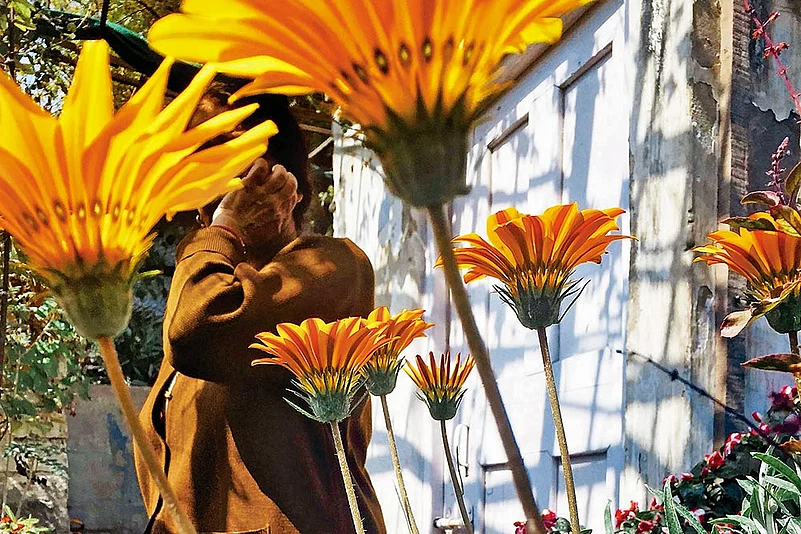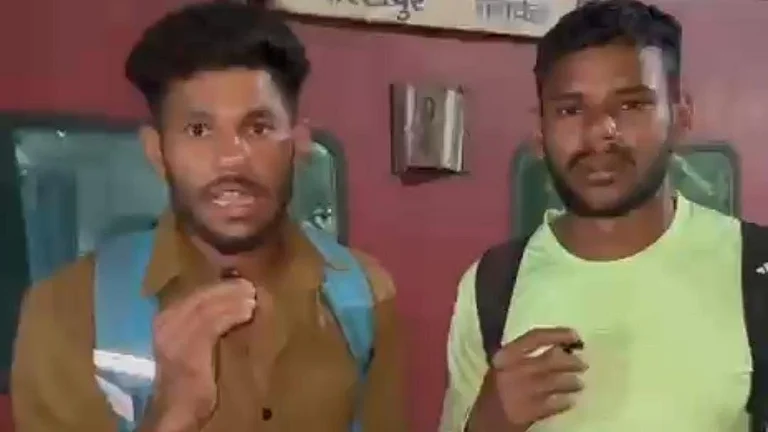Right before the first lockdown, love entered my life and home. Unaware of the havoc the virus was wreaking and its implications, I was happy that as long as I am locked up in my flat, I have someone I love and someone who loves me. I was exhausted from being alone; and the thought of sharing life with someone gave me joy. We used to speak for hours, cook and eat together, play ludo and watch films. I secretly hoped that the lockdown kept getting extended every week; completely ignorant of those who were walking to their homes. And then the visuals started coming in.
The photographs and videos of our migrant brothers and sisters deeply moved me. I was guilty, ashamed, both as a person and an artist. I felt the response of the art world to this massive, forced displacement was lukewarm at best. We were quiet; more bothered about our own existential crisis, while fellow citizens endlessly walked, sometimes to their deaths. In my personal space, cracks started to appear—conversations made way for conflict, anger replaced joy and except for a few tender moments of love, a gloomy silence filled our flat. The first lockdown ended with us parting ways; there were no last goodbyes. The virus was not just taking lives, it was altering them forever. The people I knew, the city I walked in, the strangers one encountered in the metro, buses and marketplaces, everyone and everything had changed.
I slowly resumed my walks in the city. For the first time in several years, my camera and I felt disconnected from it. Faces weren’t visible, eyes were cautious; there was a coldness in July and a lack of music in the rains that followed. Every other shop was selling face masks and hand sanitisers. These little bottles of blue and yellow were turning this city and us colourless. I learnt of colleagues who left for their hometowns because they could not support their artistic practice in Delhi. Prior to the pandemic, I was having a dream run professionally—I was travelling across the world, exhibiting at biennales and museums. But I also felt saturated in my photographic practice. I feared becoming redundant and a conformist. By the end of the first wave, life had hit rock bottom. But this is where being an artist helps. You can take all your pain, anger and regret and transform them into something beautiful. I knew that was my chance to reinvent myself. I started writing my first short film; I slowly started dreaming again.
And as I wrote and dreamt, companionship entered my life again. R was a clinical psychologist pursuing her M.Phil. We bonded over walks, her research and the film I was working on—a story of two strangers sharing a moment of intimacy separated by a window—but there was more to the story than what meets the eye. At the heart of the film were these two questions; (1) Why do we, as human beings, seek love despite the repeated hurt it may cause? (2) How does one decide that a certain mental state is deemed a psychological disorder?
In my photographic works, I have consistently explored the theme of mental illness and its representation. I have always asked myself, is it possible for photography to show something that is invisible to the eye? My ongoing book, Another Life, Another Time, Another Death, is a deliberation on memory, illness, intimacy and the invisible. Having seen someone very dear to me struggle with memory loss, this exploration of the mind has become a life-long quest. And it has never felt more relevant than now. The unseen has become our eyes in a world that looks itself in the mirror every day and finds a stranger.
ALSO READ: Song Sung Blue: The End As A New Beginning

Two weeks before the shoot of my film, I was completely broke. I had received a grant to make my film; but in my zeal to make cinema, I overshot my budget and exhausted the last of my savings. I remember one day I walked back home from work, realising I did not have enough money for an auto ride. I was angry and disappointed but I kept everything within myself. That night the doorbell rang and there was a delivery from Swiggy. R had ordered the nicest of dinners for me; she had sensed my sadness despite all the facades I was putting up. Tenderness entered my life again. I had never met someone as gentle and caring as her.
In a few months, the second wave came. Even a fleeting remembrance of it makes my eyes moist. I lost my grandmother, my house-help Asha Didi and a good friend from college, Ashish Yechury. I do not know of anyone who was not touched by loss and grief. The world collectively mourned, and in the heart of darkness, many of us rediscovered empathy and the ability to surrender to life. After a long time, I genuinely felt the pain of others. R and I lost our love amid this turmoil, but we found true friendship that will stand the test of time. After being diagnosed with Major Depression (MDD) earlier this year, I feel I am much more grateful and open towards life now than I was ever before. And as an artist, I feel more fulfilled. I am following my heart and delving deeper within myself, without losing touch with the world I inhabit. I have come to forgive those who might have hurt me and seek forgiveness of those I might have hurt.
Every apocalypse comes with hostilities and uncertainties. It tests us, both as an individual and as a society; and often we fail. But life like art is always about attempting and trying. Sooner or later we rise up to the occasion; we embrace tenderness and assert we want to be who we are; we want to live, love, hope and dream. All That We Wish To Stay is our answer to any war or pandemic, to our demons and fears, to the cruelty of life. It also happens to be the title of the film that left me broke, but made rich in other ways.
Ever grateful for these difficult loves, these small mercies.
(This appeared in the print edition as "I Of The Storm")
(Views expressed are personal)
ALSO READ
Chandan Gomes is a delhi-based photographer





















